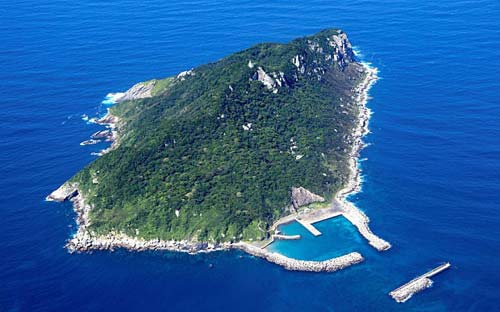The island is a site for rituals – it is called a Shinto Kami. This term refers to an ancient Japanese religion focusing on methodical ritual. Okinsohima is home to the Okitsu shrine built in the 17th century. This is a place to pray for the safety of sailors. Moreover, during the 4th and 9th centuries, successful exchanges took place amongst the Koreans and the Chinese. Before any visitor (i.e. any man) enters the island they need to take their clothes off and undergo a cleansing ritual. Once a visitor leaves, they cannot take any souvenirs or disclose any details of their visit.
The priests that live on island strongly enforce the no-female ban. They do not have a clear reason for this. The Japan Times believes that it might revolve around the common hatred around menstruation! “Shinto treats blood as an impurity.”
Another theory revolves around females as delicate creatures that need to be cared for. The trip to the island used to be dangerous so females had to stay at home and nurture their reproductory systems.
The heritage listing could catch tourist eyes and thereby emphasise the deep seated misogyny!
There has been opposition to Okinoshima’s ban, including one from a Hindu group last year that asked UNESCO to deny the island its status.
Despite these complaints, the island’s officials have been adamant about their ban.
“Our stance will remain unchanged even if it’s registered in the World Heritage List,” a Munakata Taisha official told the Mainichi Daily. Similarly, the chief priest of the Munakata Grand Shrine stated that Okinoshima is not for the general public and “people shouldn’t visit out of curiosity.”


![5 Reasons You Should Travel Alone Airplane [image source: chau nguyen/ http://thedevilhatessweatpants.blogspot.com.au ], crowd ink, crowdink, crowdink.com, crowdink.com.au](https://crowdink.com/wp-content/uploads/2016/08/Chau-airplane-218x150.jpg)





























